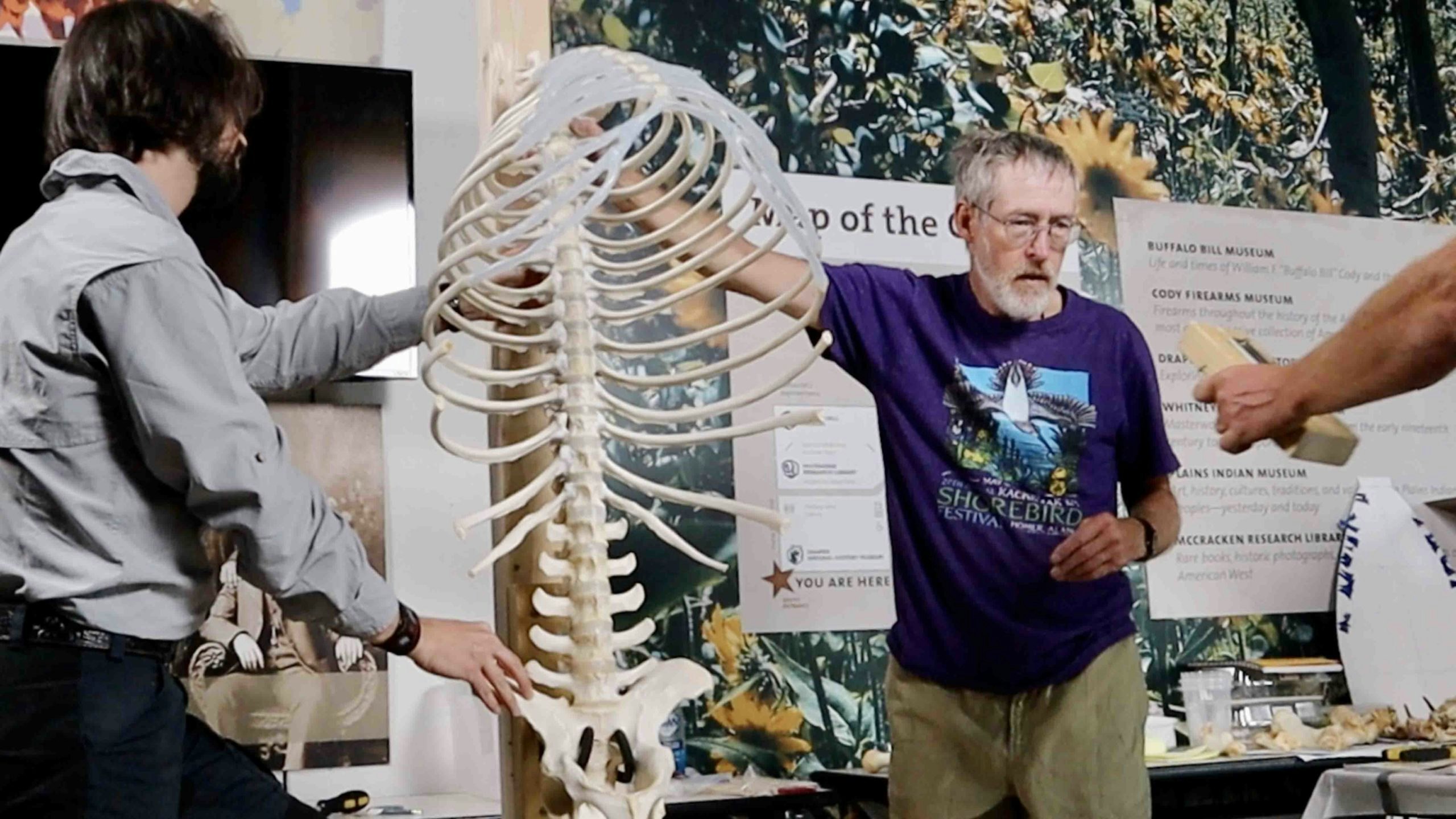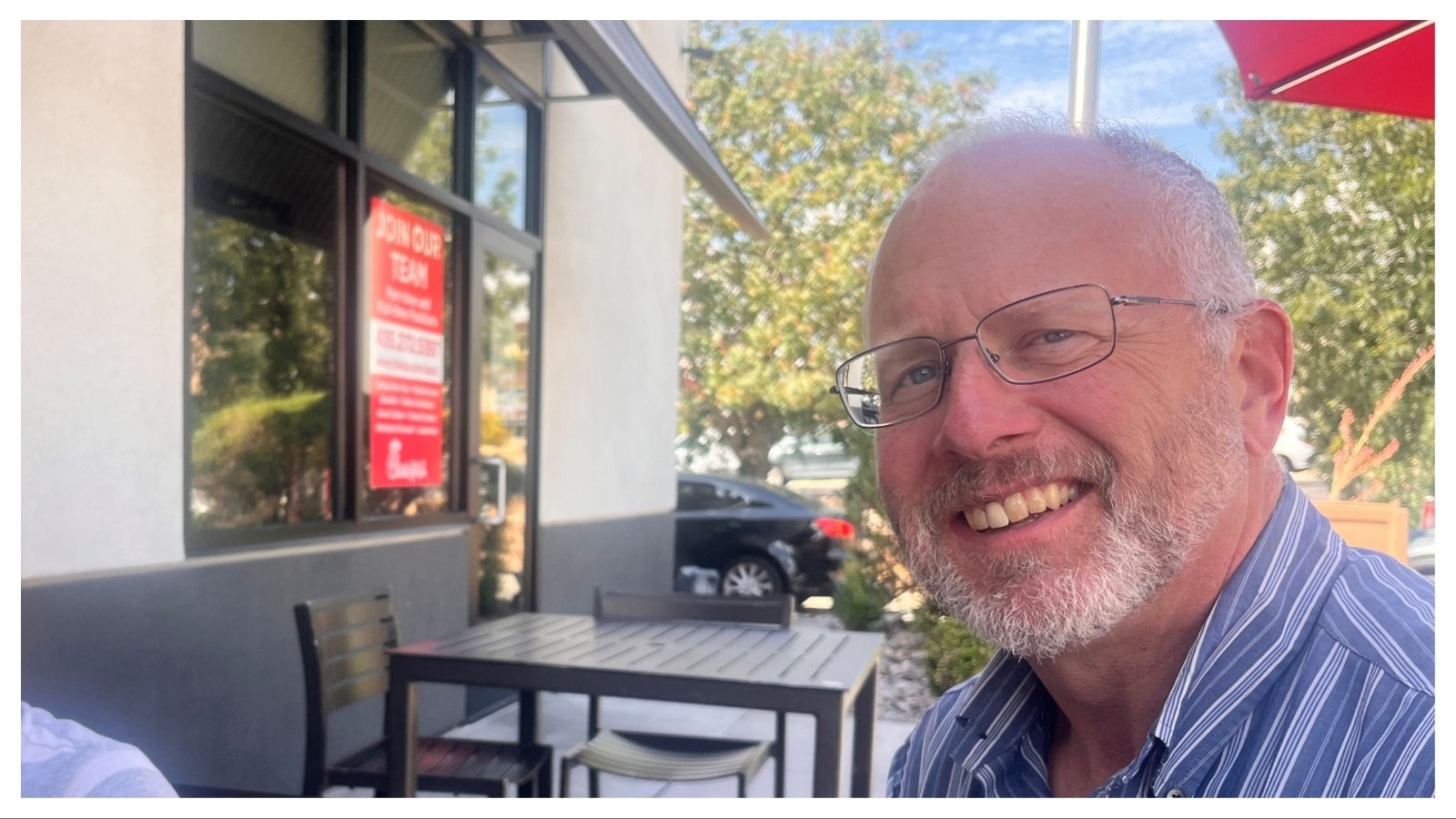**For All Things Wyoming, Sign-Up For Our Daily Newsletter***
A massive reconstruction effort is happening in Cody, but it’s not a building.
It’s a bear.
And when you build a bear – a real one – you’ve got to start with the bones.
That’s what volunteers and staff are doing at the Buffalo Bill Center of the West in Cody, under the watchful eye of expert bone builder Lee Post.
Post literally wrote the book on how to put together animal skeletons (“Building Bear Bones: A Guide to Preparing and Assembling a Bear Skeleton”), which is the guide used by staff at the Draper Museum of Natural History to assemble the bones of a 14-year-old grizzly that once inhabited this region.
“The Draper Natural History Museum was established in 2002,” said Corey Anco, the Draper Museum’s interim curator. “This year, we turned 20 years old, and this is the first time we’ve ever done a reconstruction of the skeleton at this scale, open to the public.”
Lee Post is the bone-builder himself, an expert not because of his degree, but his experience. Post isn’t an anthropologist, or even a scientist. He calls himself a “grown up nature nerd.”
“I got very interested in bones young in life, shortly after I dropped out of college, and never looked back,” Post told Cowboy State Daily.
Homer, Alaska
Post, the owner of a bookstore in Homer, Alaska, learned how to articulate skeletons as a young man at the local library.
“I live in Alaska, and we had a natural history museum, much smaller than this one, but a wonderful natural history museum,” Post said. “(They) had a whale skeleton that they had collected, it was a 17-foot Bering Sea beaked whale.”
Post said that during slow months in Homer, when he wasn’t working with his mom in their small bookstore, he hung out at the museum for the fun of it and expressed interest in assembling the whale bones. But he was told that no one at the museum had the time or the expertise to guide him.
“I had a bookstore, so I figured I’d go to my bookstore, look up books in print,” he said.
But there were none on the topic. And he found that there were no museum experts who were articulating animal skeletons in any uniform way, so their methods were all radically different.
“So, this tells me there is no gold standard for how to do this,” he said.
He then decided to use his own experience as a bicycle mechanic and occasional carpenter to come up with his own methods.
“With what I know about tools and putting things together and taking things apart,” he told the Homer museum staff, “I’m sure I can come up with better ways in this. So they gave me the go-ahead.”


How To Build Skeletons
After putting together skeletons of whales, moose, sea otters and porcupines, visitors who saw his work at the Homer Natural History Museum, as well as the local high school, began asking him to be a consultant for projects around the country.
“A lot of those visitors were teachers, and a lot of those teachers saw that and it’s like, ‘How can we do this?’ So I started writing up directions on how to do skeletons,” he said.
And now, Post has come “out of the closet,” so to speak, with his bones.
“I no longer want to just sit in a closet and put bones together by myself,” he said. “I’ve had too much fun too many times with too many organizations with their volunteers and their docents.”
Post said that his process has evolved over the years, so he can show volunteers with no experience in articulating bones how to put together a completed skeleton.
“I just love when it’s organized to a point where we can set people down and I can show them step by step how to do this,” Post said. “And that’s what (the Center of the West) wanted, was to show their people how to do this, so they could do it next time.”
“We have volunteers that are retired bankers, retired military,” Anco explained. “Colleen just spent five months in Antarctica. Julia here is in her senior year of school at University of Wyoming.”
“Adult Legos”
Anco described the process of putting together the grizzly’s bones as “adult Legos.”
“All these little pieces come together in a certain way, they have an orientation,” he explained. “And so you line that up, you match the way the pieces go. And then we’re using a combination of glue and pins and epoxy to bring this all to life.”
Anco explained that the volunteers drill holes in the bones where pins will slide, then set the pins in place with glue.
“We will be erecting this on two legs, as if it’s scratching its back, said Anco. “We will not be putting the skin back on – we want to showcase all the hard work of the volunteers and staff here in recreating this beautiful structure and skeleton. It will show how the skeletal structure lends itself to the morphology or the function of that animal.”
Anco explained that using the reconstruction of the bear as a workshop showcases the work that goes into creating displays that educate visitors.
“We wanted to do this in a way that we can show the visitors and show the community, we’re more than just exhibits on display,” Anco said. “We are actively constructing them right here, right in front of our eyes.”
**For All Things Wyoming, Sign-Up For Our Daily Newsletter***





